Dicot Leaf vs Monocot Leaf
(Difference between Dorsiventral and Isobilateral Leaf)
Dicot leaves are also called as dorsiventral leaves because they possess distinct dorsal and ventral sides. Monocot leaves are called isobilateral leaves since both the sides of monocot leaves are more or less similar. Dicot and monocot leaves show considerable differences both in their morphological and anatomical characteristics.
The present post discusses the Difference between Dicot and Monocot Leaf with a Comparison Table.
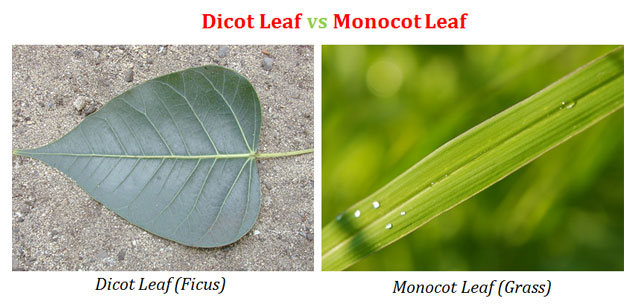
Difference between Dicot and Monocot Leaf
Sl. No. Dicot Leaf
Dorsiventral LeafMonocot Leaf
Isobilateral Leaf
1 Dicot leaves are dorsiventral Monocot leaves are isobilateral
2 Upper surface of the leaf is dark green and the lower surface is light green Both the surfaces of the leaf are equally green
3 Epidermal cells are not silicified (silica deposition absent) Epidermal cells are silicified (heavy deposition of silica)
4 Bulliform (motor) cells absent in the epidermis Bulliform cells are present
5 Leaves usually hypostomatic (stomata present on the lower surface of the leaf) Leaves usually amphistomatic (stomata present on both the surface of leaf)
6 Stomata are arranged randomly on the epidermis Stomata are arranged in parallel rows in the epidermis
Stomata 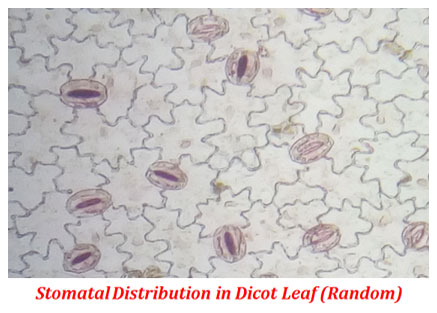
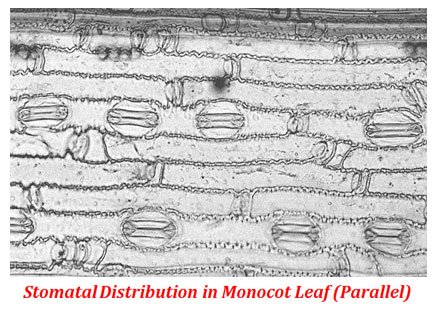
7 Stomatal guard cells are kidney-shaped Stomatal guard cells are dumb-bell shaped
Guard Cell 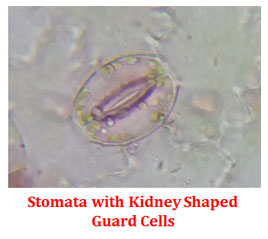

8 Mesophyll is differentiated into palisade and spongy tissues Mesophyll undifferentiated (composed of loosely packed isodiametric cells with intercellular spaces)
Mesophyll 
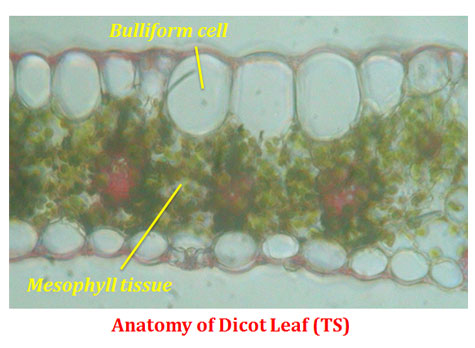
9 Leaf veins are reticulate Leaf veins are parallel
10 Protoxylem elements are indistinguishable Protoxylem elements are distinguishable as protoxylem lacuna
11 Bundle sheath with single layer of cells Bundle sheath with single or multiple layers
12 Bundle sheath cells usually lack chloroplast Bundle sheath cells usually possess chloroplasts
13 Bundle sheath extension is parenchymatous Bundle sheath extension is sclerenchymatous
14 Lower portion of the mid-rib is collenchymatous Lower portion of mid-rib is sclerenchymatous
<< Back to BOTANY Lecture Notes
If you like this post… please add your likes as COMMENTS (below↓)
More Plant Anatomy Lecture Notes…

